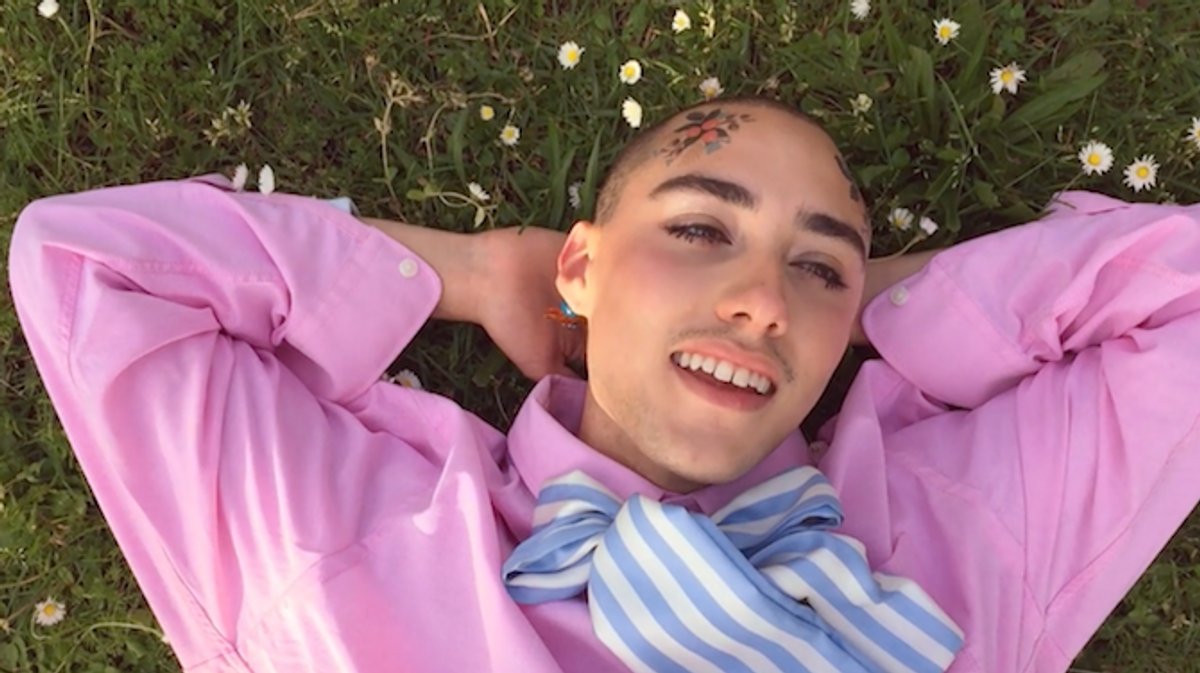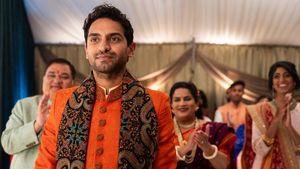Inspired by historical figures and his own personal stories, queer Colombian artist Marcelo Gutierrez explores what it means to be a contemporary romantic through his dreamy 10-minute short film, Tender Roses for Tough Climates. The intimate visual is at once surreal and familiar, in some moments dramatizing romance and in others depicting it with grim relatability.
Divided into three acts, TRFTC was shot over two years in Brooklyn, San Francisco and Los Angeles, centered on a cast of fictional characters that heighten Gutierrez's vision of romance. Act One speaks to the imagination of children, while Act Two sees an actress openly sharing her wildest dreams with the camera; finally, Act Three is about love lost, as Gutierrez remembers a dissolved romance that left him permanently scarred--"a tattoo on my heart," he says solemnly.
Watch the independent short and learn more about Marcelo Gutierrez, below.
OUT: Where are you from originally?
Marcelo Gutierrez: I'm a Colombian refugee that fled the country at age 6, during the peak of the country's devastating civil war in the '90s. I grew up in both Florida and California, between my mother and father's homes. My father was a painter and my mother a sculptor; they fell in love in Colombia, but pursued their dreams together in Italy. After running away to the United States we had to start all over--another experience that greatly matured me.
How did you first get involved in the arts?
I grew up drawing in elementary and middle school. In high school, I took acting and theater seriously, directing my first production then, as well. Throughout school I was always very socially secluded--never really a friend of someone. I attended California College of the Arts for my BFA. I was there for two years before I did a semester-long residency program in Dumbo. During college I was studying my performance, film and painting. After the residency program in Dumbo, I knew I was better off leaving CCA and staying in NYC [to pursue] my dreams. Throwing myself into new and uncomfortable experiences has always been my best education.

How long did it take you to create this film?
The film was shot over two years--my first two years in New York City. It was always a work in progress piece that developed as my personal relationship to romanticism grew stronger in cold jaded NYC.
How much of the storyline is based on fact and how much on fiction?
Both Act One and Act Two are short stories from personal experiences. Act Three is fiction, but at times the character recites lines from Candy Darling's journal and repeatedly rehearses a line from Titanic. For me, it's always important to braid fact with the fantasy of cinema. Everything is a part of your film.
Related | Happy Birthday, Candy Darling! Her 5 Most Iconic Moments
What's the relationship between the three acts?
As a whole, the three acts are reflective of what it means for me to be romantic in this day and age. Children express their fantasies on the playground and romantically live out experiences through imagination. The aspiring actress wears her heart on her sleeve, taking the risk of sharing her biggest passions and unapologetic dreams with the world. Finally, Act Three is a true love story about the one who got away--the one who could never be anything but a dream.

Casey Spooner (of Fischerspooner) is credited at the end. How was he involved?
I met Casey Spooner around 2 years ago and he quickly became a dear friend, mentor and collaborator. Casey connected me with the incredibly talented artist Johnny Magee, [who] composed the entire sound and music for the film. It was the first time I had worked with a composer and I couldn't have had a better partner.
Related | Exclusive: Casey Spooner Photographed by Matt Brown
The film aims to elevate your vision of romance. How so?
I use romance as a mechanism in my art and personal life to make experiences and ideas larger than life--to heighten my emotions and senses. It softens dark times and trauma, making them somewhat digestible. This film functions to document this sentiment, highlighting it as a legitimate approach to life.
You appear on screen in Act One, but not the final two. Why?
In previous work, I was always the main act, but I wanted to challenge myself to cast a broader range of people in order to give the audience a sense that this feeling, romance, is something we can share collectively. It's not about me, but about us--the human experience.

Who created your look in Act One?
In the first act, I wear a piece made by my ex-boyfriend, a handmade angel cowboy costume. To me the piece is fitting for the childlike character. It's playful and fantastical, reminiscent of childhood craft projects.
What perspective do you think you're bringing to art?
I'd like to think that through my work, I remind people of honesty, vulnerability and the value of romance and optimism. I'm a huge advocate of intuition and gut feelings, acting on your hearts desires and trusting yourself. Art has become less intuitive [and] less human--more of a product and less of a mark of the human experience. It's an industry now with fashionable trends and seasons.




























































































